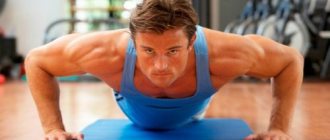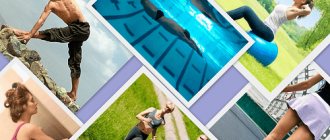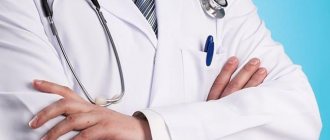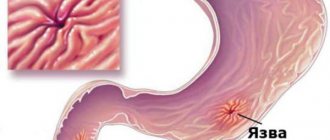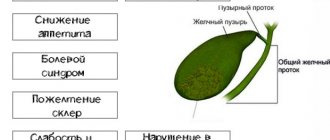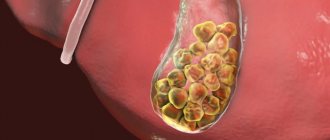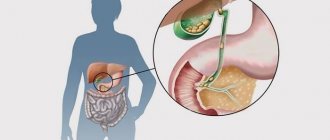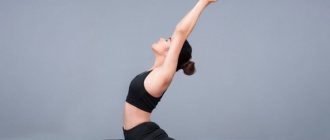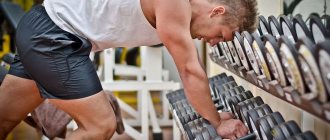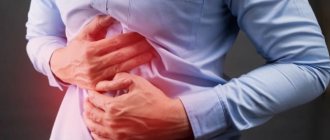The liver and gallbladder are damaged by an unhealthy lifestyle, injury, poor nutrition and many other reasons. Gastrointestinal diseases provoke deformation of the organ. This leads to stagnation of bile and problems with the functioning of the entire body. If the gallbladder is bent, you will have to start complex treatment. Therapy is prescribed exclusively by a doctor. The scheme often includes gymnastics, because with its help you can eliminate congestion. What physical exercises are allowed when the gallbladder is bent? They are performed with caution so as not to harm health.
The need for gymnastics when the gallbladder is bent
In adults, excesses most often occur with cholelithiasis, cholecystitis and other gallbladder diseases.
Gymnastics for the gallbladder allows you to eliminate the symptoms of these diseases and performs a number of important functions:
- elimination of pain and heaviness that occurs after bending;
- decreased muscle tone in the gallbladder and the body as a whole;
- increased blood supply to the cells and tissues of the abdominal cavity;
- massage of the liver and gallbladder;
- strengthening metabolic functions;
- improvement of the condition of all gastrointestinal organs;
- removal of excess enzyme from the liver and ducts.
Many people wonder whether it is possible to correct a kink in the gallbladder with physical therapy? The answer to this question depends on the stage of the disease and the degree of inflection, which largely determines the course of treatment.
Subscribe to our INSTAGRAM account!
Undoubtedly, light, specially selected physical therapy will be beneficial and can help optimize the functioning of the biliary organs and help prevent gallstones. However, these manipulations should be performed under the strict supervision of a doctor and regularly.
Exercises to remove bile from the gallbladder canal
Exercises for the gallbladder help relieve the organ and help bile pass into the intestines. Regular removal of bile from the gallbladder is an important part of the functioning of the gallbladder organs.
Therapeutic gymnastics should consist of several stages and be carried out after consultation with a doctor.
Today, a large number of videos and films have been shot with developed complexes to improve the functioning of various organs and tissues. It is important to understand that these complexes are not suitable for all patients, since each body is unique and there may be a number of contraindications for a particular workout.
Gymnastics for bending the gallbladder should be a complex:
- liver and gallbladder massage,
- physical exercise,
- exercise therapy complexes,
- beneficial for the liver and helping with stones in the gallbladder.
To create normal conditions for the functioning of the gallbladder and better outflow of enzymes, doctors recommend performing therapeutic exercises such as walking short distances, slow dancing, swimming, skiing in the winter and short ice skating.
This exercise will help increase blood flow to all organs and tissues, including the bile ducts.
“bicycle” (rotating the legs in a lying position in a circular motion), “scissors” (crossing movements with straightened lower limbs), as well as have beneficial properties for removing bile .
You can do right angle knee raises - this can be done in any position.
It is important to monitor your breathing at the same time.
These exercises do not have any consequences for a person, they can be performed in any condition and have no direct contraindications.
Exercises can be performed in a position that is comfortable for the patient. It is important not to overexert yourself or make sudden movements, which can cause increased pain and complications.
For stones and bile ducts, exercise therapy complexes should include not only useful exercises for bile stagnation, but also those that are not contraindicated for these diseases.
Why do you need charging?
Exercises are aimed at improving the flow of bile and more:
- spasm relief;
- increased metabolism;
- elimination of cholestasis;
- strengthening the nervous system;
- restoration of cardiovascular functions;
- improvement of gastrointestinal tract functions.
This type of exercise can strengthen the abdominal muscles so that they can support the internal organs well. Gymnastics for the gallbladder develops diaphragmatic breathing, improves blood circulation in the biliary system, and helps restore contractile function. Prolapse of the internal organs leads to kinking of the gallbladder, so abdominal exercises restore its normal functioning. The abdominal wall muscle after these exercises is strengthened and supports the organs in a physiological position.
Exercise is more effective if it is accompanied by yoga and daily walking in the fresh air before bed. Exercises for stagnation of bile in the gallbladder have no specific contraindications. But they are not performed during the acute course of the disease.
Standing exercises for the gallbladder
Performing exercises in a standing position is possible only with stable coordination of the patient’s movements. It is important to have a constant point of support close to where tasks are performed.
Exercises performed by the patient while standing are optimal not only for the outflow of bile, but are also very useful for bending the gallbladder, since in this position the gallbladder is most likely to assume a physiological position - this allows you to quickly remove the bend of the gallbladder and restore blood flow in the organ.
These tasks are also indicated for signs of bile stagnation.
1. Turn the body left and right with a smooth increase in the depth of rotation to the maximum level of the patient. It is important to monitor your posture and breathe correctly during the task. Repeat the exercise 7-10 times.
2. Walking with the knee joint elevated when stepping - do for 1-2 minutes.
3. Perform “rolling” from heel to toe, keep your hands on your belt at this time, and when changing position, alternately exhale and inhale. Within 30 seconds.
4. Rotation of the body, first in one direction, then vice versa - 5-10 times for each half of the body.
5. Slowly bend the body forward and backward for 30 seconds.
6. Stand up straight, legs slightly apart. Extend your arms in different directions, while placing a small object or ball in one hand. Inhale and bring your palms together, while transferring the ball from one hand to the other, and as you exhale, move it apart again. Do 10-15 times.
7. Do slow, shallow squats 10-15 times.
8. Legs are spread apart, while inhaling, we lift the extended upper limbs upward, and while exhaling, we lower them down. Do 10-15 times.
It is recommended to do physical exercise regularly, preferably in the morning, so that the body is recharged with energy and tone. Before doing the tasks, consult your doctor about the possibility of doing them.
The benefits of exercise for the digestive system
Any sport that requires energy expenditure increases internal metabolism. How does this happen? The body, giving away part of its energy reserves, requires replenishment of what was expended. Violent chemical reactions begin inside the cells to break down compounds to release energy. This is how part of the reserves of subcutaneous fat stored for a rainy day, the own fatty membrane of the internal organs, is consumed. This is very good. Old fatty compounds are poorly broken down, it takes a lot of effort to remove them, they impair the functioning of internal organs and lead to obesity. Constant, active lipid metabolism, stimulated by physical activity, produces light fats that are quickly broken down, providing more energy.
Active lipid metabolism improves the characteristics and properties of bile. Liver secretion, produced by liver cells, receives the necessary composition and consistency for the breakdown of fats, animal proteins and vitamins in the intestines.
Sports activities improve mood, relieve severe psycho-emotional stress, nervous system tension, and treat poor sleep and anxiety. Most diseases of the gastrointestinal tract begin with a disorder of the nervous system.
Digestion suffers from an imbalance between its central and peripheral parts. Various functional disorders occur, such as biliary dyskinesia, decreased tone of the gallbladder, bile stagnation, and intestinal weakness. Any physical activity is beneficial. The World Health Organization has divided people into groups according to their degree of mobility and activity. The first group includes people who prefer watching TV on the sofa to all types of recreation and their sedentary work does not involve physical activity. The last group includes those whose work involves physical activity and they prefer an active form of recreation. The intermediate two include people with average levels of physical activity and exercise intensity. The closer a person is to the first group, the greater the opportunity to acquire diseases and functional disorders, the shorter the life expectancy. This factor is always taken into account when collecting anamnesis and choosing a treatment method, especially if it concerns diseases of the gallbladder and excretory canals.
Lying exercises for the gallbladder
To remove stagnation of bile, physical exercise performed while lying down, when the body is in the most relaxed state, is also useful. This helps to increase and improve the blood supply to the tissues and reduce the tone in them.
1. Lying on your back, upper limbs parallel to the body, bend your lower limbs, press them tightly to your chest and stay in this position for a while, then slowly relax and lower your limbs.
2. The starting position is the same - lean your lower limbs against your stomach - first one, then the other, and try not to move your arms and body.
3. Position – lie on your back, knees bent, heels pressed firmly to the floor. Using sliding movements along the floor, straighten your legs to the surface, then lift them again. Perform 10-15 times.
4. Lie on your back with your knees tucked into your chest. Straighten your legs, without lifting your body, up so that your straight legs are perpendicular to the floor 10-15 times.
5. For the next task, you need to lie on your side, legs straight. Smoothly lift the limb up to the maximum level, then lower it. Do 5-10 times, then lie on the other side and repeat.
6. Lying on your stomach, arms straight above your head, lift your straight limbs based on your capabilities. 5-10 times.
7. On your stomach, perform a movement similar to breaststroke swimming for 15-20 seconds.
To carry out tasks, the patient takes a lying position on a firm, but not hard surface (for this it is better to use a special mat or lay a thick blanket on the floor).
Exercises for biliary dyskinesia
Exercises for biliary dyskinesia are indicated both during the period of remission and during the initial manifestations of the disease, when there are no sharp manifestations of pain and severe disruption of organ function.
Gymnastics for biliary dyskinesia helps eliminate biliary sludge in the gallbladder and helps reduce attacks during the disease.
Breathing exercises
Breathing exercises are the basis of the correct and most effective way of training, it allows you to increase blood flow in cells and tissues. To do this, it is recommended that a person:
1. Take a comfortable position, relax, stretch your arms forward and up, take a deep smooth breath, then slowly take the starting position, exhaling - 5-7 repetitions are recommended. If you feel dizzy or have blurred vision, you must stop the task.
2. Inflate your stomach, hold your breath, then slowly relax and exhale.
3. While lying on your back, spread your arms in different directions, then raise your arms perpendicular to the body and take a deep breath, and when lowering, exhale slowly.
4. Position - standing, hands on the belt. Move your body in different directions, breathing freely.
5. The position is the same, hands on the belt. Raise your shoulders and head up - inhale, lower your shoulders and head, then exhale.
Gallbladder massage
Gallbladder massage is one of the key points in exercise therapy for gallbladder diseases. It helps strengthen the motility of organs and improve blood supply to their cells.
There are a number of contraindications for massage that limit the circle of people who can benefit from this therapeutic effect:
- The period of acute manifestations of diseases of the abdominal organs.
- Purulent and inflammatory pathologies of the gastrointestinal tract and peritoneum.
- In case of cholelithiasis (GSD), stones are first removed from the gallbladder, and then after remission occurs, massage of the abdominal wall is possible.
Liver massage is carried out using the method of palpating the organ, by penetrating the fingers under the patient’s ribs. To achieve a greater choleretic effect, you must first massage gently, without causing pain or discomfort to the patient, and then gradually increase the load on the abdomen.
Other recommendations
In addition to regular exercises using a comprehensive methodology, which includes many exercises, during illness one should not forget about daily walks in the open air, swimming lessons, and visiting dance studios, as this will activate the functioning of the organ. Consequently, over time the patient will be able to feel much better.
To alleviate the patient’s health condition, doctors prescribe various therapeutic methods. These include taking medications and using natural remedies (infusions, infusions prepared with the addition of medicinal herbs).
When using such medications as part of treatment, it is important to remember that they are used only as an addition to medications. For various forms of the disease, doctors prescribe folk medicines from mint, rose hips, dandelion, St. John's wort, etc.
